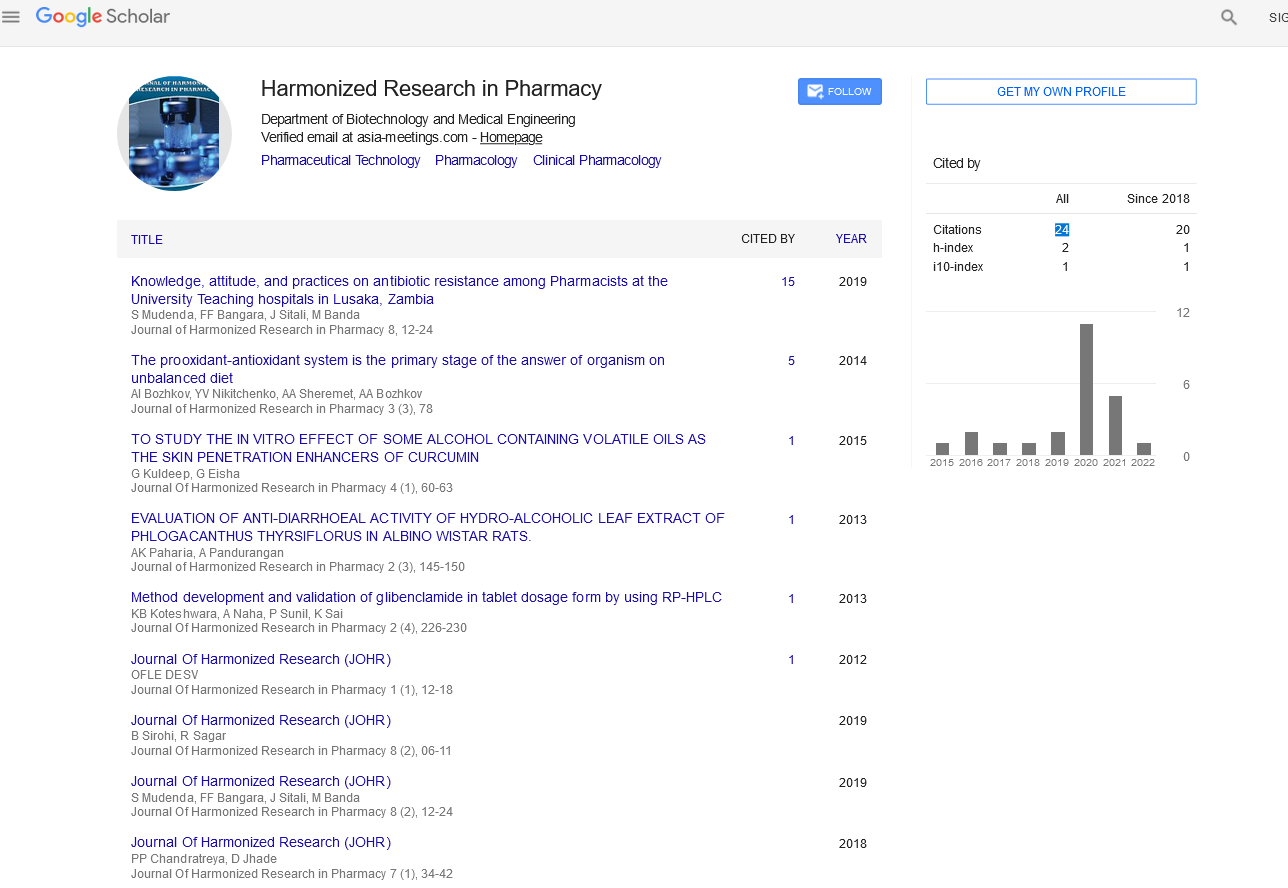DESIGN AND DEVELOPMENT OF SELF EMULSIFYING DRUG DELIVERY SYSTEM OF ZIPRASIDONE HYDROCHLORIDE
Abstract
Author(s): Lodhi Devendra Singh and Dr. Kuldeep Ganju
Ziprasidone is used in a treatment of schizophrenia, belongs to BCS class IIdrug (low solubility and high permeability). It undergoes extensive first pass metabolism with a bioavailability of only abo ut 60%.The major drawback in the therapeutic application and efficacy of ziprasidone as oral dosage form is its low aqueous solubility. Hence this work was planned to improve dissolution characteristics of the drug by increasing its release and solubility through self emulsifying drug delivery system. In the study, self-emulsifying drug delivery system (SEDDS) of ziprasidone hydrochloride, a poorly soluble drug, was developed and evaluated by in-vitro techniques. Oil, surfactant, and cosurfactant were screened out according to their solubilizing capacity. Among the tested components Oleic acid, Tween-80, PEG 400 showed good solubilizing capacity. These three components were used in different ratios to prepare Ziprasidone SEDDS. The SEDDS formulations were transparent and clear. Droplet size of the emulsion was determined by Malvern Zeta sizer. Formulation F8 minimum mean droplet size (244.7nm). In-vitro drug release from F8 was higher (98% within 120 min) than other formulations. So SEDDS may be an alternative technique for the oral administration of Ziprasidone Hydrochloride. Keyword: Self-emulsifying drug delivery, oleic acid, tween 80, PEG 400, Ziprasidone Hydrochloride

Google Scholar citation report
Citations : 147
Journal of Harmonized Research in Pharmacy received 147 citations as per google scholar report









